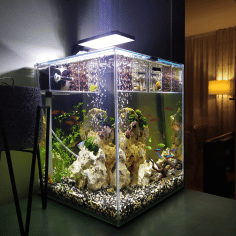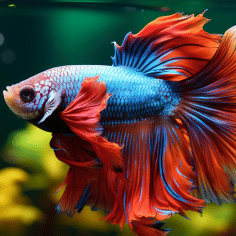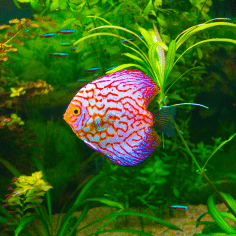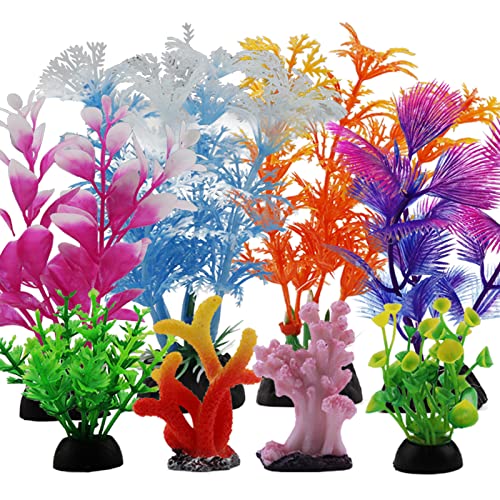Betta fish are vibrant, unique, and captivating pets that require specific tank conditions to thrive. A 5-gallon tank provides ample space for swimming, reduces stress, and maintains water quality more effectively than smaller tanks. A filter keeps the water clean, preventing harmful bacteria buildup.
A heater ensures the water temperature stays between 76-82°F, mimicking their natural habitat. Proper tank setup includes decorations and plants, offering hiding spots and mental stimulation. Regular maintenance, such as water changes and monitoring parameters, is essential. Understanding and providing these conditions ensures a healthy and happy Betta fish, enhancing their vivid colors and active behavior.
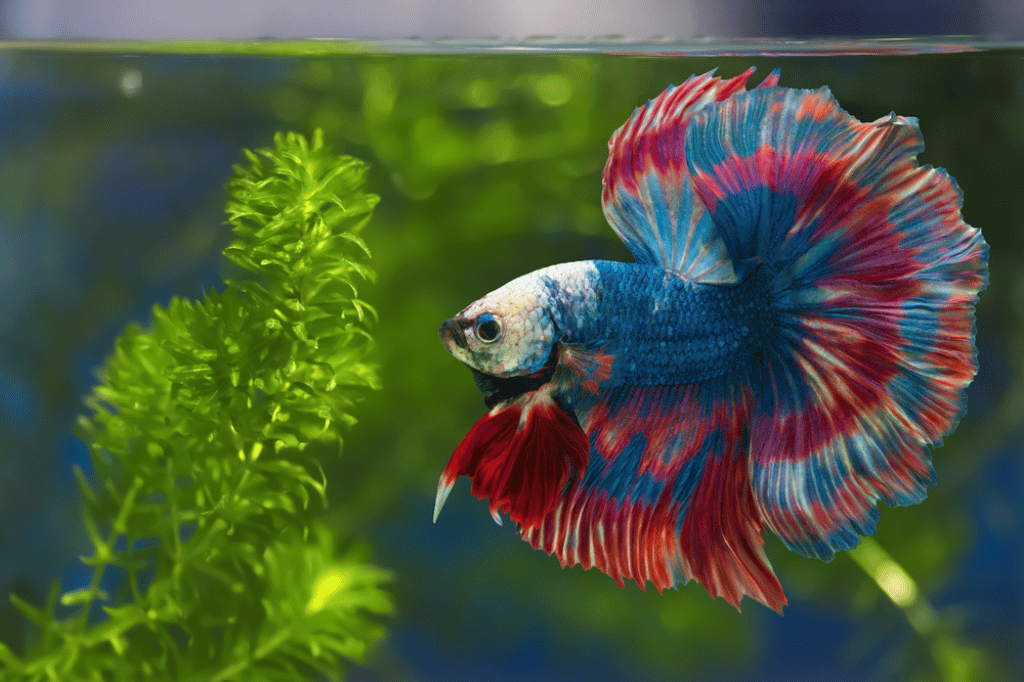
Betta Fish Tank Essentials: Enhance Your Aquatic Haven by Insiderfish.com
Allure Of Betta Fish
Betta fish, also known as Siamese fighting fish, are among the most popular aquarium pets. Their stunning beauty and unique personalities captivate fish enthusiasts. Let’s explore the allure of Betta fish, focusing on their vibrant colors, graceful fins, and distinct behavior.
Vibrant Colors And Graceful Fins
Betta fish are famous for their vibrant colors. They come in shades of blue, red, yellow, and purple. These colors make them stand out in any tank.
Their graceful fins flow like delicate silk in the water. There are various fin types, including veiltail, crowntail, and halfmoon. Each type adds unique beauty to the fish.
Betta fish fins come in different shapes and sizes. Some are long and flowing, while others are short and spiky. This variety makes each Betta fish unique.
Betta Fish Behavior And Personality
Betta fish have distinct personalities. Some are shy, while others are more outgoing. They often recognize their owners and respond to their presence.
These fish are known for their territorial behavior. Male Betta fish can be aggressive towards each other. It is best to keep them in separate tanks.
Betta fish also have a labyrinth organ. This allows them to breathe air from the surface. It makes them unique among other fish species.
| Color | Fin Type | Personality Trait |
|---|---|---|
| Blue | Veiltail | Shy |
| Red | Crowntail | Aggressive |
| Yellow | Halfmoon | Playful |
Choosing The Right Tank
Choosing the right tank for your Betta fish is crucial for their health and happiness. A good tank provides enough space and a safe environment. Let’s explore the key factors in selecting the perfect tank.
Size Matters: Minimum Tank Requirements
Betta fish need room to swim and explore. The minimum tank size should be at least 5 gallons. Smaller tanks can stress your Betta and make the water quality hard to manage.
Here is a simple guide:
| Tank Size | Number of Betta Fish |
|---|---|
| 5 gallons | 1 Betta |
| 10 gallons | 1-2 Bettas (with divider) |
Avoid bowls and small containers. They limit the space and can lead to poor water conditions. A larger betta fish tank ensures better health for your Betta.
Material Considerations: Glass Vs. Acrylic
Glass and acrylic are the two main materials for fish tanks. Each has its pros and cons.
- Glass Tanks:
- Clearer view
- More scratch-resistant
- Heavier and less likely to warp
- Acrylic Tanks:
- Lighter and easier to move
- More flexible and less likely to break
- Can scratch more easily
Choosing between glass and acrylic depends on your needs. Glass offers clarity and durability. Acrylic provides flexibility and is easier to handle.
Glass tanks are better for a permanent setup. Acrylic tanks work well if you need a lightweight option.
Water Conditions For Betta Health
Betta fish are vibrant and beautiful creatures. Proper water conditions are essential for their health. To ensure your Betta thrives, focus on maintaining the right temperature, pH level, and water hardness. These factors significantly impact your Betta’s well-being.
Temperature Control: Heaters And Thermometers
Bettas are tropical fish. They need warm water to stay healthy. The ideal temperature range is between 76°F and 82°F. Using a reliable heater helps maintain this temperature. A consistent temperature prevents stress and illness.
A good thermometer is also essential. Check the water temperature daily. This ensures the heater is working correctly. Digital thermometers are easy to read and accurate. Some models even have alarms for temperature fluctuations.
Ph Levels And Water Hardness
Betta fish prefer slightly acidic to neutral water. The ideal pH level is between 6.5 and 7.5. Test the water regularly using pH test kits. Adjust the pH if it falls outside this range.
Water hardness also affects Betta health. Bettas thrive in soft to moderately hard water. The optimal hardness level is between 3 and 5 dGH (degrees of general hardness). Use water conditioners to achieve the right hardness.
| Parameter | Ideal Range |
|---|---|
| Temperature | 76°F – 82°F |
| pH Level | 6.5 – 7.5 |
| Water Hardness | 3 – 5 dGH |
Maintaining these parameters ensures a healthy environment for your Betta fish. Regular checks and adjustments keep your Betta happy and vibrant.
Filtration Systems
Filtration systems are vital for maintaining a healthy environment for your Betta fish. They help remove waste, toxins, and other harmful substances from the water. This ensures your Betta thrives in a clean and safe habitat. Let’s dive into the different types of filters and how to maintain a clean tank environment.
Types Of Filters: Pros And Cons
Choosing the right filter can be tricky. Here’s a breakdown of common filter types:
| Filter Type | Pros | Cons |
|---|---|---|
| Internal Filters |
|
|
| Sponge Filters |
|
|
| Hang-On-Back (HOB) Filters |
|
|
Maintaining A Clean Environment
Maintaining a clean tank environment is crucial for your Betta’s health. Follow these tips:
- Regular Water Changes: Change 25% of the water weekly. This removes excess waste and toxins.
- Monitor Water Parameters: Check pH, ammonia, nitrite, and nitrate levels. Use a reliable test kit.
- Clean the Filter: Rinse filter media in old tank water. Do this monthly to prevent clogging.
- Remove Uneaten Food: Scoop out leftover food daily. This prevents decay and poor water quality.
- Vacuum the Substrate: Use a gravel vacuum. This removes debris from the tank bottom.
Keeping a clean tank ensures your Betta remains happy and healthy. A proper filtration system aids in this process.
Aquatic Landscaping
Creating a beautiful Betta fish tank goes beyond just adding water and fish. Aquatic landscaping plays a vital role in making the environment both visually appealing and functional. This involves choosing the right plants, substrate, and decorations to make your Betta feel at home.
Plants: Real Vs. Artificial
Real plants offer numerous benefits. They help improve water quality by absorbing nitrates and providing oxygen. They also create a more natural habitat for your Betta.
On the other hand, artificial plants require less maintenance. They don’t need light or special care. They can be just as colorful and decorative as real plants.
Here’s a quick comparison of real vs. artificial plants:
| Feature | Real Plants | Artificial Plants |
|---|---|---|
| Maintenance | High | Low |
| Water Quality | Improves | No Effect |
| Cost | Varies | Usually Lower |
| Appearance | Natural | Varies |
Substrate And Decorations
Choosing the right substrate is essential. Gravel and sand are popular choices. Gravel is easy to clean and helps anchor plants. Sand provides a soft bed for bottom dwellers.
Decorations add personality to your tank. They offer hiding spots and help reduce stress for your Betta. Popular choices include:
- Caves
- Driftwood
- Rocks
Ensure all decorations are aquarium-safe. Sharp edges or toxic materials can harm your Betta.
A well-decorated tank not only looks great but also creates a stimulating environment. Your Betta will thrive in a thoughtfully landscaped home.
Lighting Up Your Betta’s World
Lighting is crucial for a Betta fish tank. It impacts your Betta’s health, mood, and overall well-being. Proper lighting enhances their vibrant colors and keeps them active. Let’s dive into the essentials of lighting your Betta’s world.
Choosing The Right Lighting
Picking the right lighting for your Betta fish tank ensures they thrive. Betta fish prefer soft, gentle light. Avoid bright, harsh lighting as it can stress them out. LED lights are the best choice. They offer adjustable brightness levels and are energy-efficient.
Consider the size of your betta fish tank when selecting lights. A smaller tank needs less powerful lights, while a larger tank requires more. Here’s a simple guide:
| Tank Size | Recommended Light Wattage |
|---|---|
| 1-5 gallons | 1-2 watts |
| 5-10 gallons | 2-4 watts |
| 10-20 gallons | 4-8 watts |
Full-spectrum LED lights are ideal. They mimic natural sunlight and promote plant growth. This helps maintain a balanced ecosystem in your tank.
Lighting Schedules And Effects
Lighting schedules are vital for your Betta’s health. They need a consistent day and night cycle. This mimics their natural habitat and keeps them stress-free.
Set a timer for your tank lights. Ensure your Betta gets 8-12 hours of light each day. Follow this with 12-16 hours of darkness. This cycle helps regulate their sleep patterns.
- Morning: Turn on the lights gradually.
- Daytime: Keep the lights on for 8-12 hours.
- Evening: Dim the lights gradually.
- Night: Ensure complete darkness for 12-16 hours.
Proper lighting affects your Betta’s behavior. Bright light can cause stress and lethargy. Soft, gentle lighting keeps them active and happy. Always monitor their behavior and adjust lighting as needed.
Feeding Your Betta
Feeding your Betta fish properly is crucial for its health and well-being. Bettas are unique creatures with specific dietary needs. Below are detailed guidelines on how to feed your Betta correctly.
Dietary Needs
Betta fish are carnivorous and thrive on a high-protein diet. Their diet should include:
- Betta Pellets: Specially formulated pellets are ideal.
- Frozen or Live Food: Bloodworms, brine shrimp, and daphnia.
- Occasional Treats: Freeze-dried options can be given sparingly.
Ensure the food is high in protein and low in fillers. Avoid overfeeding as it can lead to health issues.
Feeding Routines And Portion Control
Establishing a consistent feeding routine is essential. Follow these guidelines:
- Feed your Betta twice a day, once in the morning and once in the evening.
- Provide only what your Betta can consume in two minutes.
- Remove any uneaten food to maintain water quality.
Overfeeding can cause bloating and water pollution. A fasting day once a week helps in digestion.
| Food Type | Feeding Frequency | Portion Size |
|---|---|---|
| Betta Pellets | Daily | 2-3 Pellets |
| Frozen or Live Food | 2-3 times a week | As much as they can eat in 2 minutes |
| Freeze-dried Treats | Once a week | 1-2 pieces |
Stick to these guidelines to keep your Betta fish healthy and happy.
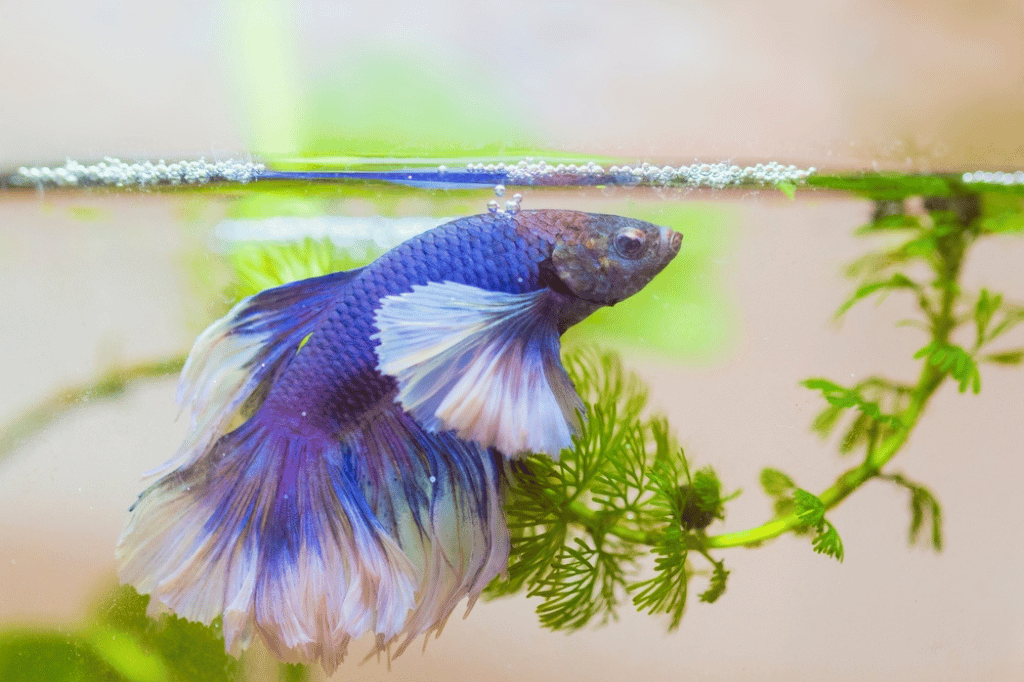
Tank Maintenance And Care
Proper tank maintenance ensures your Betta fish stays healthy and happy. Consistent care keeps the water clean and the fish stress-free. Discover simple steps to maintain a Betta fish tank effectively.
Regular Cleaning Schedule
Creating a regular cleaning schedule is crucial. Clean the tank weekly to prevent algae buildup and harmful bacteria. Use a siphon to remove debris from the gravel.
| Task | Frequency |
|---|---|
| Water Change | Weekly (25-30%) |
| Gravel Cleaning | Weekly |
| Filter Maintenance | Monthly |
Replace 25-30% of the water each week. Use dechlorinated water at the same temperature as the tank. Clean the tank walls with an algae scraper.
Monitoring Betta Health And Behavior
Observing your Betta’s health and behavior ensures early detection of problems. Healthy Bettas are active and have vibrant colors. Watch for signs of illness.
- Loss of color
- Clamped fins
- Refusal to eat
- Labored breathing
If you notice any of these signs, check the water parameters immediately. Test for ammonia, nitrites, and pH levels. Ensure the water temperature is between 76-80°F (24-27°C).
Routine monitoring helps prevent serious health issues. Take action swiftly to maintain a healthy tank environment.
Common Betta Tank Mistakes To Avoid
Keeping a Betta fish can be rewarding, but some common mistakes can harm your fish. Knowing these mistakes helps you provide a better environment for your Betta fish.
Overcrowding And Incompatible Tank Mates
Overcrowding your Betta tank is a big mistake. A Betta needs space to swim freely. A 5-gallon tank is the minimum size recommended for one Betta fish.
Choosing incompatible tank mates can stress or harm your Betta. Avoid aggressive fish or fish with long, flowing fins. Good tank mates include:
- Snails
- Small, peaceful fish like neon tetras
- Shrimp
Always research before adding new tank mates.
Neglecting Water Changes And Testing
Neglecting water changes can lead to poor water quality. Betta fish need clean water to thrive. Perform a 25% water change weekly to maintain healthy water conditions.
Failing to test water parameters is another common mistake. Use a reliable test kit to check ammonia, nitrite, nitrate, and pH levels. Keeping these parameters in check ensures your Betta’s health.
Here’s a simple table to guide you:
| Parameter | Ideal Range |
|---|---|
| Ammonia | 0 ppm |
| Nitrite | 0 ppm |
| Nitrate | Below 20 ppm |
| pH | 6.5 – 7.5 |
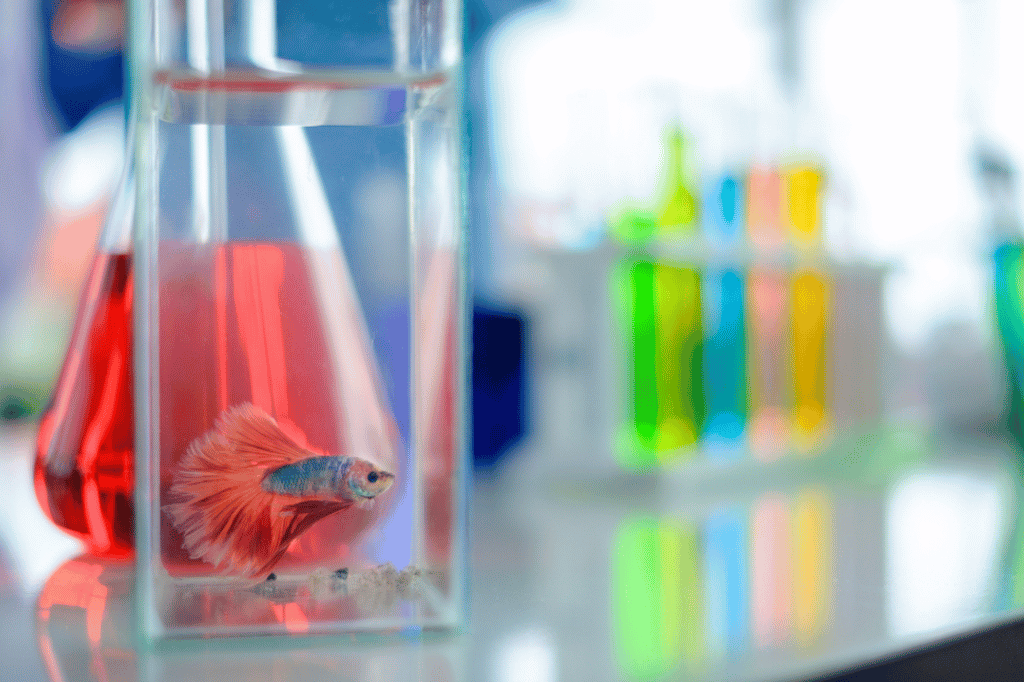
Upgrading Your Betta’s Habitat
Upgrading your Betta fish tank can significantly improve your fish’s quality of life. A larger, more enriched environment helps your Betta thrive. Below, we discuss key considerations and advanced features to enhance your Betta’s habitat.
When To Consider A Larger Tank
A larger tank offers more swimming space for your Betta. It also provides a healthier environment. Consider upgrading to a larger tank if you notice the following signs:
- Your Betta seems bored or lethargic.
- Water quality is hard to maintain.
- There’s limited space for decorations or plants.
A larger tank can reduce stress and improve your Betta’s overall well-being. A 5-gallon tank is usually the minimum recommended size. However, a 10-gallon tank offers even more benefits.
Advanced Features And Accessories
Advanced features and accessories can make your Betta’s tank more engaging. Here are some options to consider:
| Feature/Accessory | Benefits |
|---|---|
| Heater | Maintains a stable water temperature, ideal for Betta fish. |
| Filter | Improves water quality by removing waste and toxins. |
| Live Plants | Provide hiding spots and oxygenate the water. |
| LED Lighting | Enhances tank appearance and supports plant growth. |
| Automatic Feeder | Ensures consistent feeding, even when you’re away. |
Heaters are essential for maintaining a stable temperature. Betta fish thrive in water temperatures between 76°F and 82°F. Filters help keep the water clean, reducing ammonia and nitrate levels. Live plants not only enhance the tank’s appearance but also provide hiding spots. LED lighting can mimic natural light cycles, supporting plant growth and enhancing the tank’s visual appeal. Lastly, an automatic feeder ensures your Betta is fed regularly, even when you’re not home.
By upgrading your Betta’s habitat, you create a more stimulating environment. This leads to a happier, healthier fish.
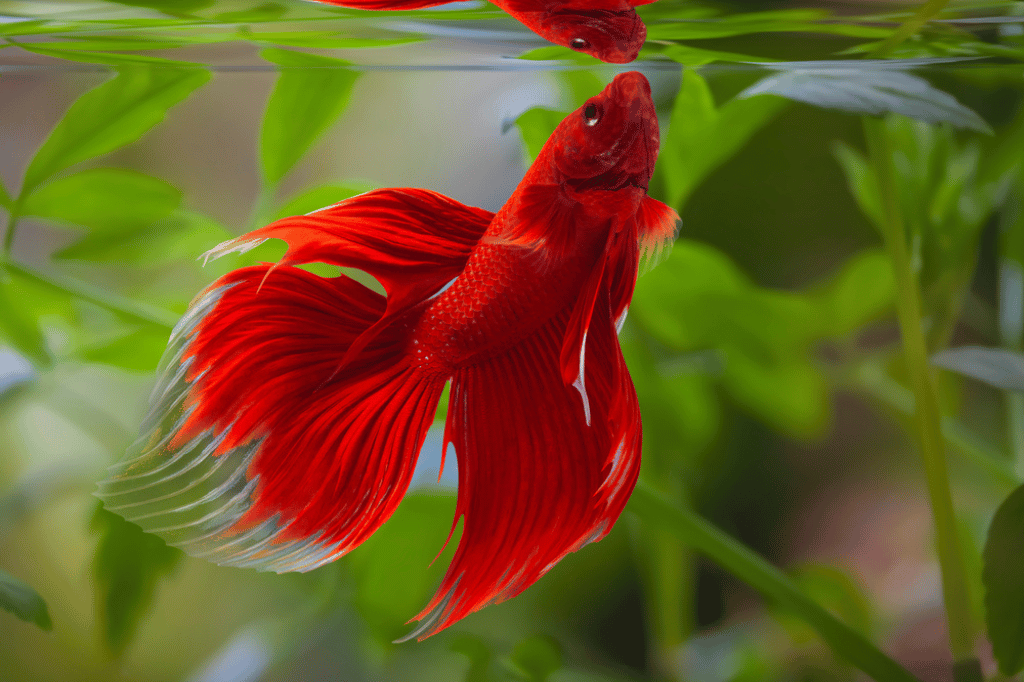
Frequently Asked Questions Of Betta Fish Tank
What Size Tank Does A Betta Need?
A betta fish needs a tank size of at least 5 gallons. Larger tanks promote better health and well-being.
Is A 2 Gallon Tank Ok For Betta?
A 2-gallon tank is too small for a betta. Betta fish need at least a 5-gallon tank for optimal health.
What Do Bettas Need In Their Tank?
Bettas need a tank with at least 5 gallons of water. Provide a heater, filter, and hiding places. Maintain water temperature between 76-81°F. Include plants and decorations for enrichment. Regular water changes are essential.
What Is The Best Tank Setup For A Betta Fish?
A 5-gallon tank with a heater and filter is ideal for a betta fish. Use a gentle filter, maintain a temperature of 78-80°F, and provide hiding spots with plants or decorations.
Conclusion
Choosing the right Betta fish tank is essential for your pet’s health. Ensure the tank is clean and spacious. Proper setup enhances their well-being and vibrancy. Invest in quality equipment to create a thriving habitat. Happy Betta fish lead to happy owners.
Enjoy your beautiful, colorful Betta fish!



